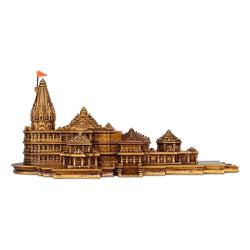Navratri is one of those times of the year when devotion and celebration blend seamlessly. For nine nights, people across India and beyond come together to worship Goddess Durga in her many forms, each day carrying its own meaning, rituals, and colors.
The word itself is simple yet profound: nav means nine, and ratri means nights. These nine nights are moments of prayer, fasting, music, and dance, reminders of the eternal balance between strength and compassion, and the victory of good over evil.
What makes Navratri truly special is that each day feels like a chapter in a story. With its own symbolism and mood, each day invites us to pause, reflect, and celebrate the divine energy that sustains life. In this article, we’ll explore what each of the nine days means, and how these traditions continue to carry spiritual depth even in today’s time.
The Essence of Navratri
Navratri falls in the Hindu lunar month of Ashwin (around September or October) and is dedicated to Goddess Durga, the embodiment of strength, purity, and divine energy (Shakti). At its heart, the festival tells the story of Durga’s victory over the demon Mahishasura, a reminder that righteousness and truth will always find their way, even against the greatest odds. Each of the nine days is devoted to a different form of the goddess, showing the many ways her power and grace reveal themselves in our lives.
What makes Navratri even more beautiful is how it is celebrated differently across India, each region adding its own traditions and spirit. In the north, the nine days lead into Dussehra, when Lord Rama’s triumph over Ravana is honored. In Gujarat, the nights come alive with Garba and Dandiya, circles of dance that feel almost timeless. And in Bengal, Navratri becomes Durga Puja, a grand, heartfelt worship of the goddess in her most majestic form. Together, these diverse traditions remind us that while faith may take many forms, its essence remains the same, devotion, strength, and the victory of light.
The Nine Days and Their Significance
Each day of Navratri is associated with a specific form of Goddess Durga, and devotees offer prayers, perform rituals, and reflect on the qualities these forms represent. Below is a detailed look at the nine days and the corresponding deities:
Day 1: Shailputri
The first day is dedicated to Goddess Shailputri, meaning "daughter of the mountains." She is the embodiment of strength and devotion, associated with the Muladhara (root) chakra. Devotees worship her to seek stability and grounding. She is depicted riding a white bull and holding a trident and a lotus. Offerings include pure ghee, symbolizing nourishment and purity.

Fig: Shailputri
Picture Credit: Wikipedia
Day 2: Brahmacharini
On the second day, Goddess Brahmacharini, the ascetic form of Durga, is worshipped. Representing penance and devotion, she inspires devotees to pursue spiritual knowledge and self-discipline. She is depicted holding a rosary and a water pot, symbolizing meditation and austerity. Offerings of sugar or jaggery are made to invoke her blessings for wisdom and determination.

Fig: Brahmacharini
Day 3: Chandraghanta
The third day honors Goddess Chandraghanta, named for the crescent moon adorning her forehead. She represents peace, courage, and serenity. Her ten arms, holding various weapons, signify her readiness to protect her devotees. Milk-based offerings, such as kheer, are made to seek her blessings for prosperity and tranquility.

Fig:Chandraghanta
Credit: Wikipedia
Day 4: Kushmanda
Goddess Kushmanda, worshipped on the fourth day, is believed to have created the universe with her divine smile. Associated with the Anahata (heart) chakra, she embodies creativity and vitality. She is depicted with eight arms, holding weapons and a rosary. Offerings of malpua, a sweet delicacy, are made to invoke her blessings for health and energy.

Fig:Kushmanda
Credit: Wikipedia
Day 5: Skandamata
The fifth day is dedicated to Goddess Skandamata, the mother of Lord Kartikeya (Skanda). She represents maternal love and nurturing energy. Depicted holding her son and a lotus, she is worshipped to strengthen familial bonds and grant wisdom. Offerings of bananas are common, symbolizing health and contentment.

Fig: Skandamata
Credit: Wikipedia
Day 6: Katyayani
Goddess Katyayani, a fierce warrior form of Durga, is worshipped on the sixth day. Known for her courage and determination, she is revered by devotees seeking strength to overcome obstacles. She is depicted riding a lion and holding a sword. Honey is offered to invoke her blessings for courage and success.

Fig: Katyayani
Credit: Wikipedia
Day 7: Kalaratri
On the seventh day, Goddess Kalaratri, the fiercest form of Durga, is worshipped. Her dark complexion and fiery demeanor symbolize the destruction of ignorance and evil forces. She protects devotees from fear and negativity. Offerings of jaggery are made to seek her blessings for protection and liberation.

Fig: Kalaratri
Credit: Wikipedia
Day 8: Mahagauri
Goddess Mahagauri, worshipped on the eighth day, represents purity and serenity. Her radiant white form signifies cleansing of sins and spiritual purification. Devotees offer coconut to seek her blessings for peace and forgiveness. This day, known as Ashtami, is particularly significant, with many performing Kanya Pujan, where young girls are worshipped as embodiments of the goddess.

Fig: Mahagauri
Credit: Wikipedia
Day 9: Siddhidatri
The ninth day is dedicated to Goddess Siddhidatri, the bestower of spiritual powers (siddhis). She is worshipped for granting wisdom and fulfillment of desires. Depicted with four arms, holding a mace, discus, book, and lotus, she is associated with spiritual enlightenment. Offerings of sesame seeds or til-based sweets are made to seek her blessings for success and prosperity.

Fig:Siddhidatri
Credit: Wikipedia
Navratri celebrates feminine power, resilience, and the timeless victory of light over darkness. Each day invites us to reflect on the goddess’s qualities, strength, wisdom, and compassion, and to bring those virtues into our own lives. Beyond devotion, it is also a time of togetherness, when communities share rituals, dances, and meals in a spirit of joy.
It is equally a moment for inner renewal. Fasting, prayer, and mindful living during these nine days are believed to cleanse body, mind, and soul, leading to Dussehra, when the triumph of righteousness is honored.
At Taragram, we cherish the continuation of such traditions in an eco-friendly way. Our collection of Navratri essentials, like sustainable dupattas, kalash vessels, handcrafted idols, and festive décor, is designed to keep celebrations both authentic and kind to the planet.
May this Navratri bring devotion, discipline, and light into your home and heart.
Sustainably yours, since 1985.





